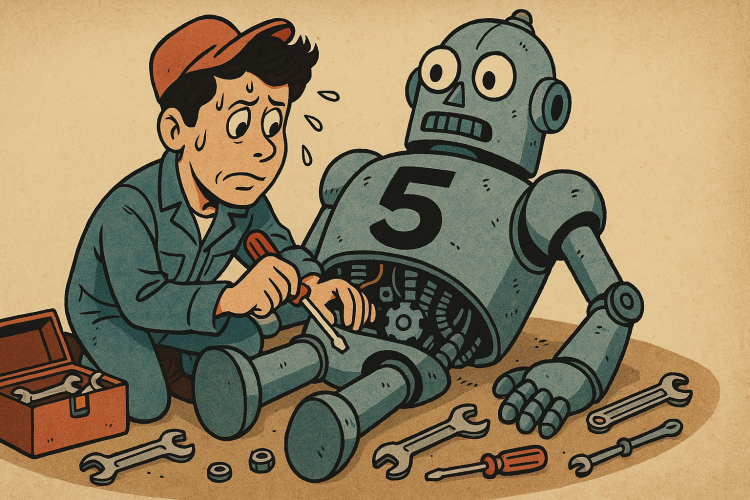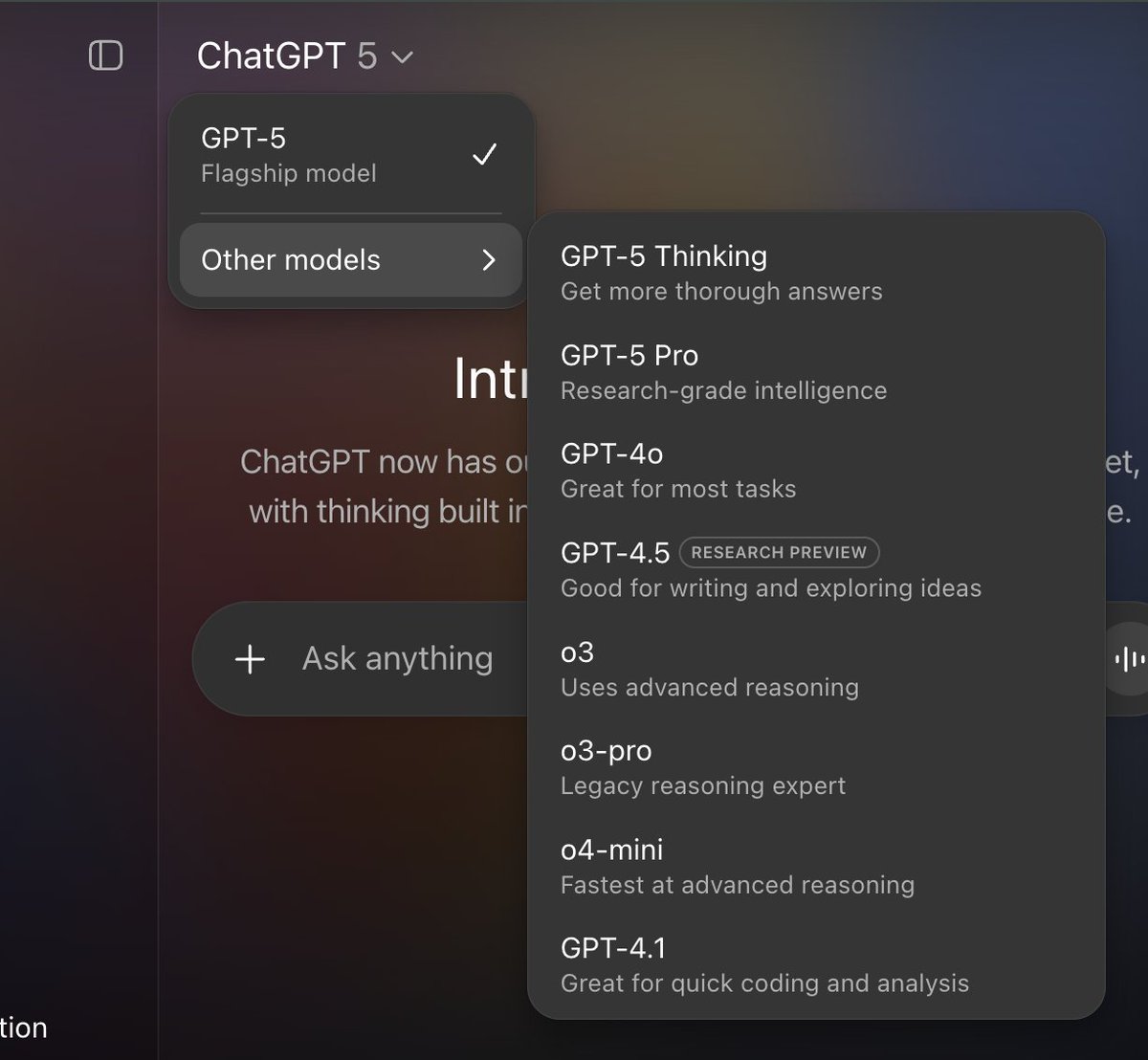
OpenAI re-activates their old models of chatGPT after Sam Altman admitted a problematic GPT-5 launch

Theodoros Dimitriou
August 11, 2025 • 4 min read • AI

A Rare Admission from OpenAI's Leadership
In a rare admission of failure from the world's leading AI company, OpenAI CEO Sam Altman announced that the company would restore access to previous ChatGPT models after what he described as a "more bumpy than hoped for" GPT-5 rollout.
The decision comes just days after the much-anticipated GPT-5 launch, which promised smarter, faster, and safer AI interactions but instead delivered inconsistent performance that left millions of users frustrated.
The Autoswitcher Breakdown
The root of the problem lies in OpenAI's new automatic "router" system, designed to intelligently assign user prompts to one of four GPT-5 variants: regular, mini, nano, and pro, with an optional "thinking" mode for complex reasoning tasks.
However, as Altman revealed on X (formerly Twitter), a critical component of this system—the autoswitcher—was "out of commission for a chunk of the day," causing GPT-5 to appear "way dumber than intended." This technical failure led to users receiving responses from suboptimal model variants, resulting in basic errors in mathematics, logic, and coding tasks.

Real-World Performance vs. Marketing Hype
While OpenAI's internal benchmarks positioned GPT-5 as the leading large language model, real-world usage painted a starkly different picture. Users flooded social media with examples of the AI making fundamental mistakes:
- Mathematical errors: Data scientist Colin Fraser demonstrated GPT-5 incorrectly solving whether 8.888 repeating equals 9 (it doesn't)
- Algebraic failures: Simple problems like 5.9 = x + 5.11 were routinely miscalculated
- Coding inconsistencies: Developers reported worse performance on "one-shot" programming tasks compared to Anthropic's Claude Opus 4.1
- Security vulnerabilities: Security firm SPLX found GPT-5 remains susceptible to prompt injection and obfuscated logic attacks
User Backlash and Infrastructure Strain
The problematic launch triggered immediate backlash from ChatGPT's 700 million weekly users. API traffic doubled within 24 hours of the release, contributing to platform instability and further degrading user experience.
In response to mounting complaints, Altman took to Reddit to announce that ChatGPT Plus users would now have the option to continue using GPT-4o—the previous default model—while OpenAI "gathers more data on the tradeoffs" before deciding how long to maintain legacy model access.
Immediate Fixes and Future Plans
OpenAI has outlined several immediate changes to address the crisis:
- Rate Limit Increases: ChatGPT Plus users will see doubled rate limits as the rollout completes
- Model Transparency: The company will make it clearer which model variant is responding to each query
- UI Improvements: A forthcoming interface update will allow users to manually trigger thinking mode
- Enhanced Decision Boundaries: OpenAI is implementing interventions to improve how the system chooses the appropriate model variant
A Cautionary Tale for AI Development
This reversal marks a significant moment in AI development, highlighting the challenges of deploying complex systems at massive scale. While OpenAI continues to work on stabilization efforts, the incident serves as a reminder that even industry leaders can stumble when balancing innovation with reliability.
For users and developers alike, the temporary restoration of legacy models provides a valuable safety net while OpenAI addresses the underlying issues with GPT-5's routing system.
Looking Forward
The pressure now mounts on OpenAI to prove that GPT-5 represents genuine advancement rather than an incremental update with significant drawbacks. Based on early user feedback, the company has considerable work ahead to regain user confidence and demonstrate that their latest model truly delivers on its ambitious promises.
As the AI industry continues to evolve at breakneck speed, this incident underscores the importance of thorough testing and gradual rollouts for mission-critical AI systems. The stakes have never been higher, and users' expectations continue to rise with each new release.
As Altman concluded in his statement, "We expected some bumpiness as we roll out so many things at once. But it was a little more bumpy than we hoped for!" The AI community watches closely as OpenAI navigates these growing pains, with competitors ready to capitalize on any continued missteps.
Share this post
Help others discover this content by sharing it on your favorite social networks!
Subscribe to my Newsletter
Stay informed with the latest updates and insights.

Theodoros Dimitriou
Senior Fullstack Developer
Thank you for reading my blog post! If you found it valuable, please consider sharing it with your network. Want to discuss your project or need web development help? Book a consultation with me, or maybe even buy me a coffee ☕️ with the links below. Your support goes well beyond a coffee drink. Its a motivator to keep writing and creating useful content.
You might also like
Kimi K2 Thinking: Open‑Source Reasoning Hits the Frontier
Moonshot AI’s Kimi K2 Thinking pushes open‑source reasoning to frontier‑level benchmarks with tool-augmented performance, fast INT4 inference, and real-world agentic coding gains.
Nvidia's AI Empire: How Jensen Huang Built the Future of Computing
OpenAI Financial Future
Sam Altman signals that OpenAI will finance AGI at any scale it can responsibly support — prioritizing progress over short‑term cost, with two clear conditions.
Grokipedia went Live yesterday
xAI launches Grokipedia (beta v0.1), a Grok-powered encyclopedia with 885k+ articles and real-time fact-checking — raising big questions about neutrality vs. speed.